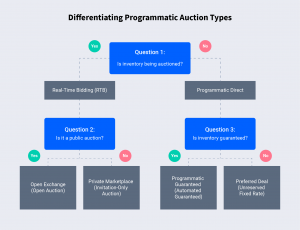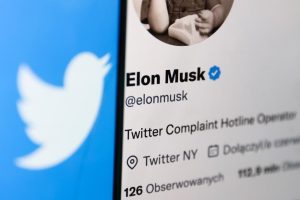— April 27, 2018
Fresh out of business school, Laura began networking and accompanied her efforts with a resume when appropriate. In turn, she received a call from a business-travel agency highly interested in her talents. Laura accepted the interview and, dressed in a new business suit and with a polished and relevant resume in hand, she showed up 30 minutes early ready to put her best foot forward.
After an hour wait, an assistant ushered her into the CEO’s office, where she was drilled on where she came from, if her parents graduated from college, if they suffered from any mental illnesses, what they did for a living (“just to ensure she was professional material”), if she was married or had children, and how she would appeal to potential clients Laura knew weren’t remotely interested in business travel. To close the interview, the CEO awkwardly revealed he didn’t care what happened to the company following his soon-to-be retirement. Politely thanking the CEO, Laura left hoping no one from the agency would ever call her again. Sadly, four months later, she did receive a call back.
Yes, this is a true story. And, unfortunately, such interview horror stories are not uncommon.
A Broken Hiring Process Means More Time Job Hunting
Liz Ryan, Fortune 500 human-resource (HR) senior vice president and Forbes HR writer, confirms that “the hiring process has been breaking down for 20 years, but the pace of its devolution has been picking up lately.”
And, even after landing the job, bad hiring processes translate into less-than-favorable employment experiences: 65% of people begin searching for their next job within 3 months of being hired.
The good news is job hunters now have an up-and-coming companion ready to fight for their interests: artificial intelligence (AI).
Artificial Intelligence Offers Job Hunters Better Long-Term Success
Ken Lazarus, Marlina Kinnersley, WorkFusion, Scout Exchange, Fortay.ai and countless AI firms are in the trenches, researching, building and honing the AI-powered platforms job hunters can lean on for improved experiences. Their expertise and solutions reveal four ways AI is working behind the scenes to offer smoother and more successful job-hunting journeys.
AI Helps Job Hunters Get Matched with the Right Role for their Skill Sets
While searching for available positions, researching companies, catering resumes to positions, writing cover letters, networking, and attending several interviews for each job opening, job hunting is often a full-time job. This is especially true when job hunters don’t filter out interviews for positions unlikely to match their skill sets. AI makes seeking relevant employment opportunities more efficient and, as such, more successful.
Ken Lazarus, CEO of Scout Exchange, a talent-matching platform serving startup brands and Fortune 10 companies alike, explains how job seekers can lean on AI. He says good recruiters know their industries well, including the skill sets needed to perform their respective jobs and the connections needed to earn an audience before key employers.
“If I’m in Virginia and I want a job doing defense research and analysis for the government, there are recruiters who specialize in that and the best way to get the job is to get to know them,” he says.
But, not all recruiters are equally good at their jobs. So, he stresses the importance of job hunters forming relationships with the right recruiters. They can use AI-powered Scout Exchange to gauge participating recruiters. To do so, he encourages job seekers to ask recruiters their platform rating.
Scout Exchange generates an AI-powered rating that reflects how successful each recruiter matches candidates to jobs. A poor rating alerts job hunters a recruiter is unlikely to recommend them to jobs worth their effort and time to land.
AI helps job hunters find the perfect working culture.
Organizational cultures have endless variations and quirks. One organization may have casual communication norms but a strong hierarchy while another has formal social norms but stresses teamwork and a flat-organizational structure.
Likewise, job seekers have equally varied work-environment preferences. They may prefer a startup culture, a flat organization, a strong social environment, a team environment, or to work independently.
To ensure candidates remain engaged and committed to the jobs they’re offered, talent firms are leaning on AI to match job hunters’ organizational-culture preferences to companies that align with them. Though many talent-matching platforms are meant for employers to use, Fortay offers job hunters a quiz they can take to determine what company cultures they would most likely thrive in.
Once a quiz is completed, Fortay’s AI algorithm goes to work compiling a list of relevant companies. Job seekers then receive a list of companies in their inboxes, complete with a button that, once pushed, guides them through applying to available jobs within those companies.
AI ensures hiring bias doesn’t create obstacles.
Studies show that humans are unconsciously biased even when we don’t meant to be. As a result, hiring bias can create road blocks for job seekers. “If we assume people are bias…then we know that whatever data set we have is going to have bias baked into it because that data set is based on human decision-making that has happened in the past,” explains Ken Lazarus.
As a result, he says experienced data scientists program algorithms to eliminate hiring bias and, thereby, prevent algorithm contamination. The good news is that, given a good size data set and when data scientists lean on AI, they can reduce bias’s impact for a better future of work.

For example, Ken knows there is a 25% higher chance a male or female recruiter will recommend job candidates matching their gender. So, when a male recruiter recommended four male candidates, Scout Exchange’s data scientists removed one of them to eliminate bias from results. They then programmed this formula into their talent-matching algorithm to prevent bias from being baked into their predictions going forward.
Once programmed into the AI-powered algorithm, this formula is then scaled to affect millions of talent-matching events. In turn, as employers receive less biased job-candidate lists, job seekers enjoy a fair representation in their industries and before key employers.
AI helps to match internal employees to growth opportunities.
Thus far, we’ve looked at how AI works behind the scenes to help candidates in job hunting. But, AI continues to work even after candidates are hired to ensure they keep their hard-earned jobs and grow successful careers from them.
WorkFusions AI-powered SmartCrowd solution, for example, allows brands to monitor employee performance to pinpoint areas in which employees could develop new skill sets. Then, it devises catered-training programs so employees are set up for success in their current roles and have more opportunities for advancement.
In addition, it monitors employees to pinpoint their strengths, then allocate jobs to those with highest performance ratings. This means AI works behind the scenes to single out employees who best match available internal positions, then recommends them to those managers in positions to make promotion decisions.
In the End, honesty allows AI to walk alongside job seekers at all stages of their journey.
Laura learned the hard way that accepting every interview can be a mistake. Irrelevant skill sets, misaligned cultural preferences, hiring bias, and poor propensity for on-the-job success can lead to horror-story interviews and even worse job experiences.
But, AI is clearly making job seekers’ journeys easier. And, there’s more good news: it’s only going to get better from here. Growing data sets and continuous AI learning means AI platforms like WorkFusion’s, Fortay’s, and Scout Exchange’s will only get smarter and more efficient.
The trick for job seekers to take advantage of all AI has to offer now and in the future is honesty, says Ken Lazarus. Make sure resumes accurately align with job performance and skill sets. In doing so, you feed AI data sets that power a brighter future for all job seekers at all stages of the employment journey.
A similar version of this piece published on Towards Data Science.
Business & Finance Articles on Business 2 Community
(109)
Report Post




